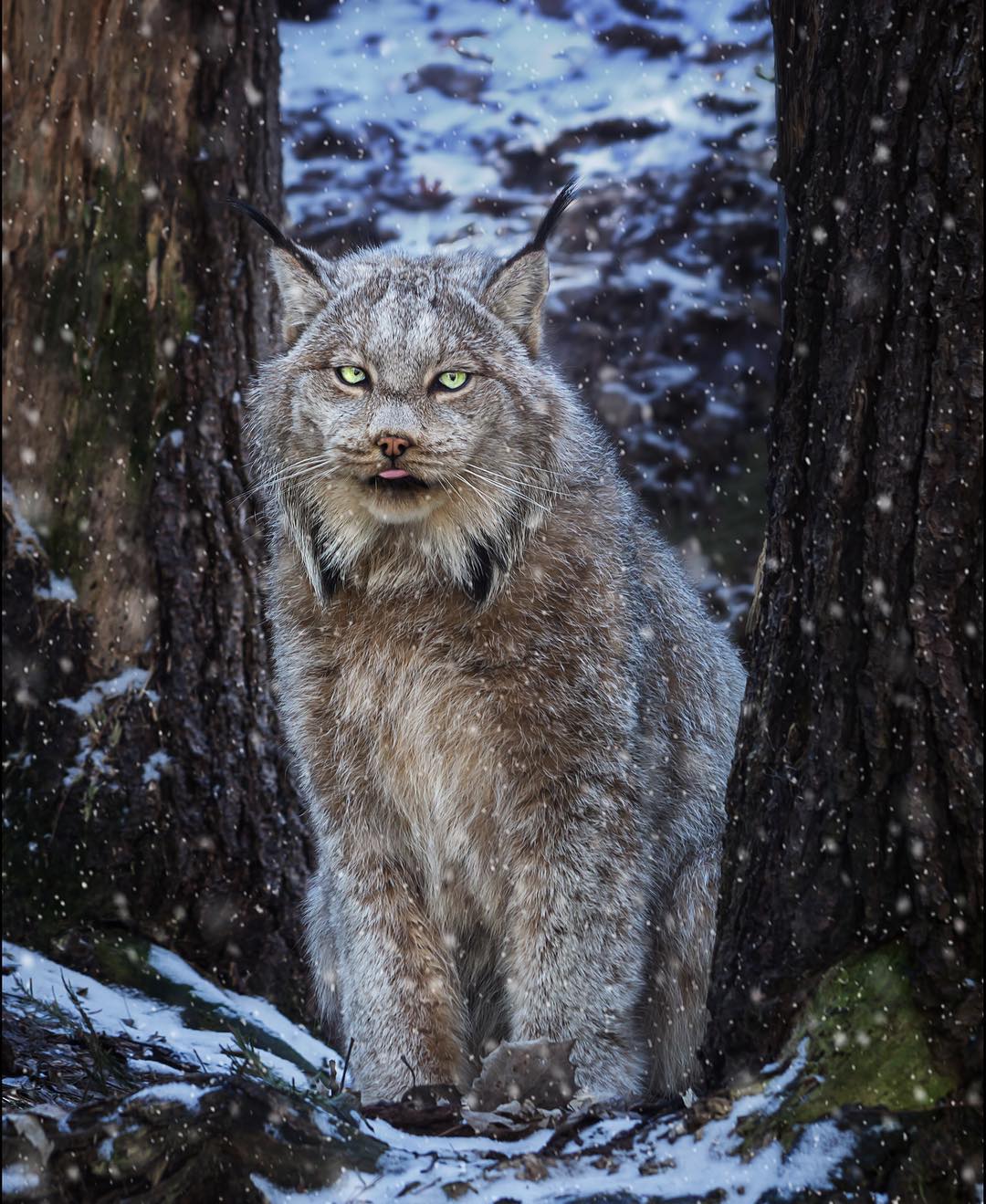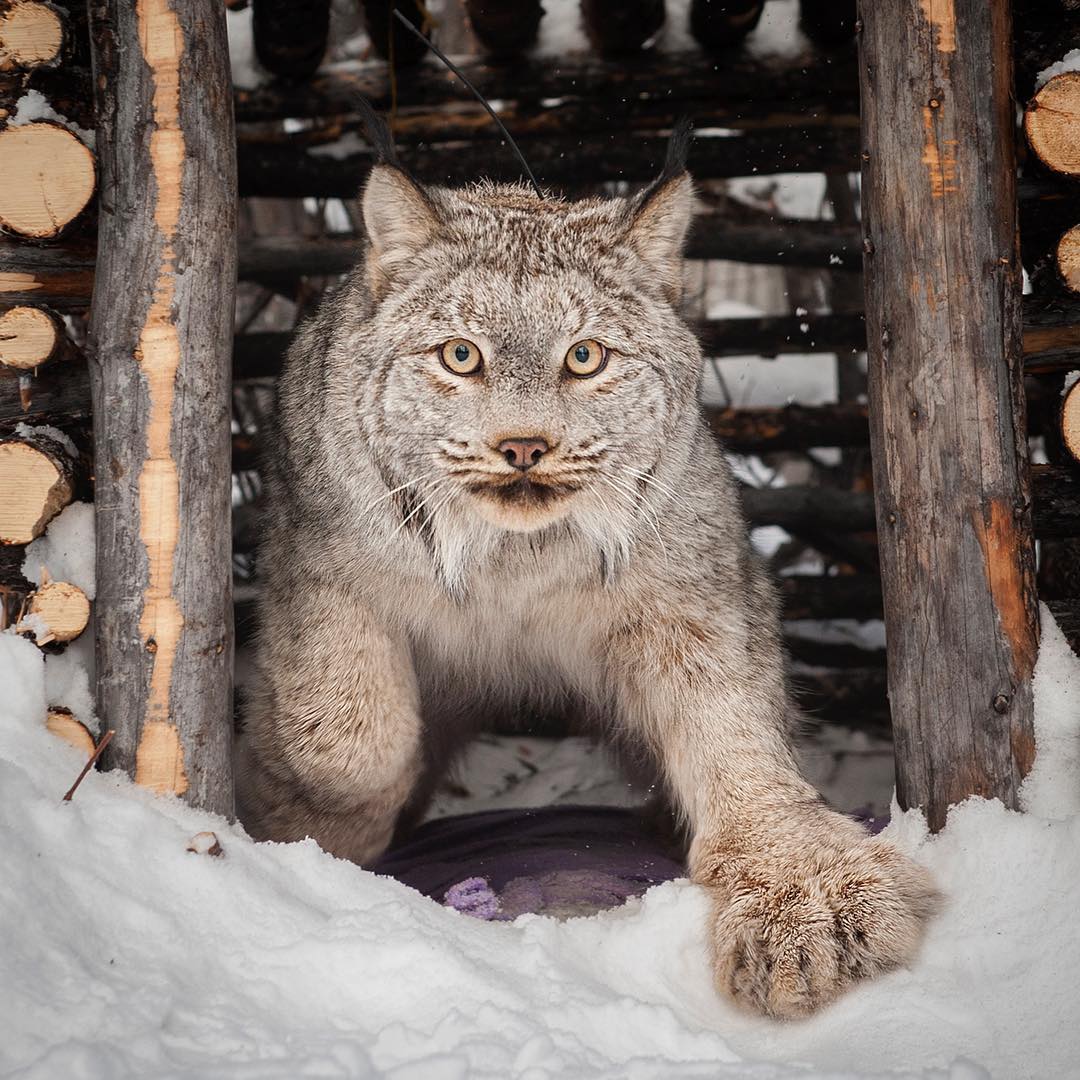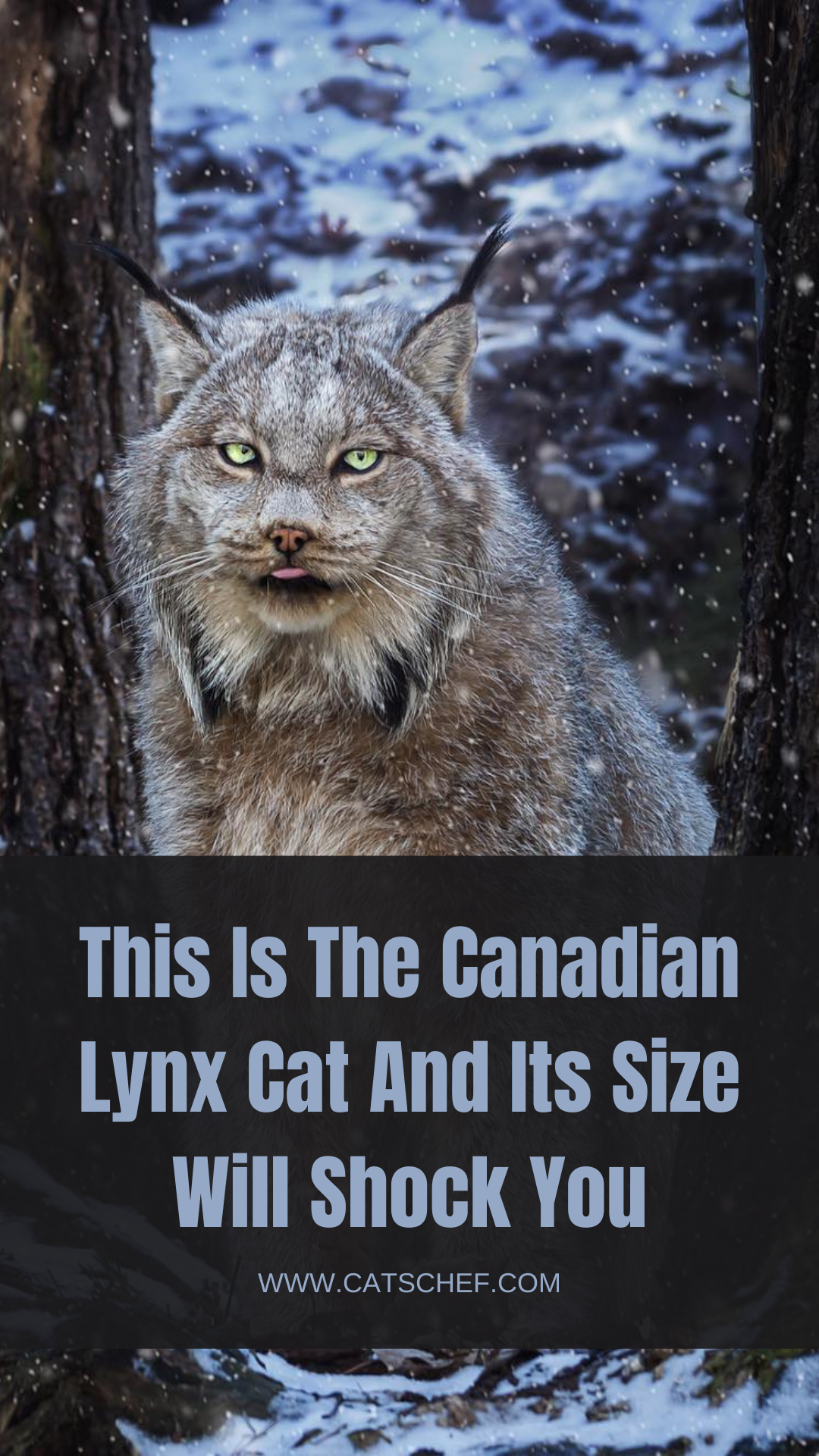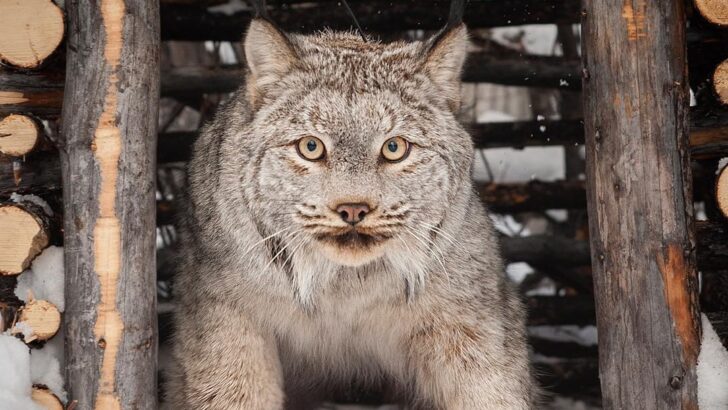Every feline is beautiful and purrfect in her own unique way. Whether it be their adorable toe beans, cute button nose, mesmerizing eyes, or fluffy fur – they are all majestic and have a special place in our hearts.
However, there is something truly magical about a feline that has a sort of wild appearance. I don’t know about you, but when I see a wild-looking kitty, I immediately adore and fear her, all at the same time.
Well, this Canadian lynx cat evokes exactly those feelings of awe and admiration. Only one look at her and she has us all under her spell.
Canadian lynx cat, also known as the gray ghost of the North, is probably one of the rarest cats in the world today. She can be found inhabiting parts of Canada and Alaska and the northern areas of the United States in general, although she was never abundant in these regions.
This feline is characterized by her long, dense coat which is usually brownish or grayish in color, pointy triangular ears with black tufts at their tips, black-tipped bobbed tail, and broad, rounded, and furry paws which are reminiscent of snow shoes.
Since this cat lives in heavily snowed areas, their shoe-like paws make dashing through the snow ten times easier and more efficient.
When it comes to her size, a Canadian lynx cat stands between 19 and 22 inches tall and weighs somewhere between 11 and 37 lbs, which is a little more than a regular domestic cat.

However, just because she may appear as the wild sibling of your little fluffy couch potato, do not be mistaken! This northern feline is a true (and possibly dangerous) predator.
Although her appearance is strongly reminiscent of a bobcat, these two beauties have some differences. They both belong to the lynx family and both have ear tufts, the major difference by which these two can be distinguished is their tail.
Both of them have a bobbed tail. However, the tail of a bobcat is usually white on the underside, has a black spot on the top, and several stripes along the length of the tail, while the Canadian lynx, as already mentioned above, has a tail that looks as though its tip was simply dipped in black ink.
And do you want to know what Canadian lynx cat feeds on? Well, as you have probably already guessed, this wild feline bases her diet on the principles of predator-prey relations.
Thanks to her beautiful big eyes and ears, she has no troubles in the vision and hearing department, which both make her an excellent hunter.
Her prey of choice is almost always a snowshoe hare – a northern rabbit that happens to have a brownish coat during summer and a white coat during winter.
That natural attempt of his to disguise himself presents no problem to the Canadian lynx cat, as she is able to see (and catch) him without fail, ending up almost exclusively feeding on this species.
Throughout the years, these two species have simultaneously evolved – the Canadian lynx cat becoming better and better at hunting the snowshoe hare, and the hare becoming better at avoiding the Canadian lynx cat. Their connection is so strong that their population oscillates in nearly perfect synchrony.
On average, the Canadian lynx cat will kill one hare every two to three days. However, if she is out of the main prey supplies, she can also turn her hunting attention to grouse, rodents, and other animals.
Believe it or not, the Canadian lynx cat cannot run very fast. So, she bases her hunting technique on sneaky tactics which usually involves finding a hiding spot in the snow and waiting for the prey to come to her.

Most of the time, she ends up waiting in her hiding place for hours before she catches something. Now, that is what I call patience, dedication, and determination!
This majestic-looking animal is extremely hard to spot in the wild. She tends to be very timid and secretive by nature, so she is not exactly out and about, making herself visible to everyone. And also, as stated above, she spends the majority of her time hiding to catch her lunch.
However, if you happen to be an adventurous photographer, or you are just someone who wants to go and shoot (with a camera!) the Canadian lynx cat by yourself, make sure you go during winter months and visit densely wooded areas, as there are naturally more hiding places there.
Also, be very quiet and keep your distance as much as possible. You do not want to scare her away or summon another wild animal.
Anyway, if you do end up going somewhere up North and you do take a couple of photos of the Canadian lynx cat, make sure you send us your photos as we would love to see them. Especially those of her murderous furry mittens! So unbelievably beautiful!

